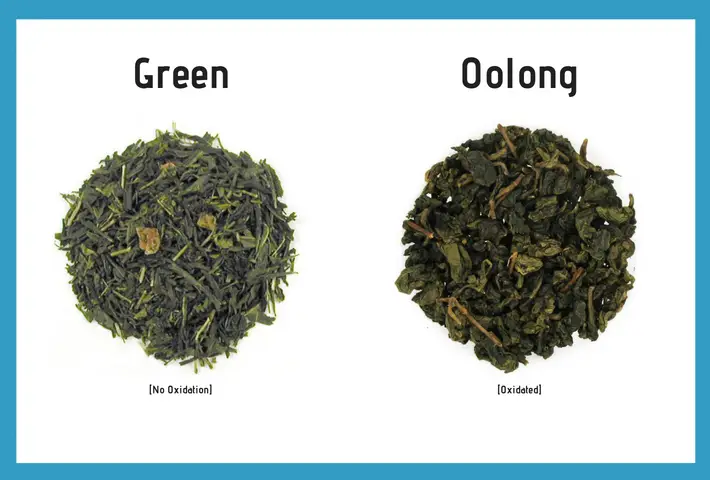
Green tea has a vegetal. Difference Between Oolong and Green Tea For one oolong tea involves the fermentation of the Camellia sinesis plant using oxidation.

A cup of brewed oolong tea contains small amounts of calcium magnesium and potassium.
Oolong tea green tea difference. While oolong and green tea are both made from the Camellia sinensis plant their differences arise in the way they are processed. Oolong tea is slightly fermented while green tea is not fermented at all. This means that all oolong teas go through the process of oxidation where tea leaves are dried over a period of several weeks.
Green tea tastes nothing like oolong. Oolong has a deep earthy flavor with some fruity notes with a little floral taste sometimes. It should not have any kind of grassy or vegetal taste.
Green tea is almost an opposite tasting tea to oolong. Green tea has a vegetal. Oolong tea is oxidized at levels ranging from 8 to 85.
That is a pretty vast difference so it makes sense that the flavors would vary immensely as well. Green tea is thus more suited to seasoned tea drinkers whose palates have developed an appreciation for its typical grassy and bitter flavor. Whereas oolong tea is suitable for those of you who prefer more varied flavors.
Oolong and green teas are true teas along with black white and puerh teas. This means they are made from the leaves of the Camellia sinensis plant a species of evergreen shrubs or small trees native to East and Southeast Asia and India. There is no difference in a bout of oolong tea vs.
Both Oolong and green tea have almost the same amounts of caffeine in them. A cup of either one has approximately 70 milligrams of caffeine but some suggest that the caffeine level in green tea varies between 35-70 mg while in oolong tea it varies between 50-75 mg. So this cannot be a deciding factor for the choice of tea to be made.
The caffeine content in matcha is also dependent on how it is produced with higher quality ceremonial grade matcha containing more caffeine than lower grades. Tea drinking is a ceremony. Difference between black tea green tea and oolong tea There are many different ways to categorize tea.
One is by the level of oxidation. It can be roughly classified by unoxidized tea as green tea half-oxidized tea as oolong tea or full-oxidized tea as black tea. 6 rows The world of tea is vast and filled with wonderful combinations of various ingredients and nuance.
The bypass of oxidation allows green tea to retain most of its natural dark green color tannins vitamin C chlorophyll and minerals. The taste of green tea is therefore more astringent and subtler than oolong or black tea. The lack of oxidation is also responsible for the very low caffeine content of green tea only 1.
Difference Between Oolong and Green Tea For one oolong tea involves the fermentation of the Camellia sinesis plant using oxidation. On the other hand green tea doesnt undergo any fermentation. It is left in the open for days or weeks to dry out.
Oolong Tea Oolong tea is basically a Chinese tea that is made from the same plant that makes black and green tea. The only difference is how it is processed. While tea leaves all contain a certain amount.
Oolong tea is slightly fermented while green tea is not fermented at all. This means that all oolong teas go through the process of oxidation where tea leaves are dried over a period of several weeks. The leaves are exposed to oxygen which results in a darker brown color.
Oolong like both green and black tea originates from the Camellia Sinensis plant. The difference between these teas lies in how theyre processed. Oolong is fermented and allowed to partially oxidize while green tea is not.
Black tea is fully fermented and oxidized. A cup of brewed oolong tea contains small amounts of calcium magnesium and potassium. It also contains about 38 mg of caffeine.
In comparison a cup of green tea contains about 29g of caffeine.